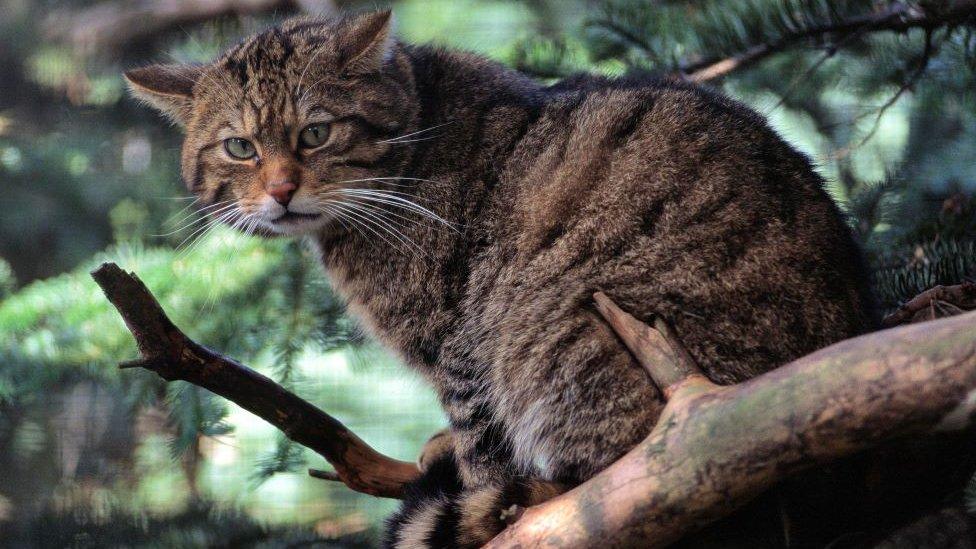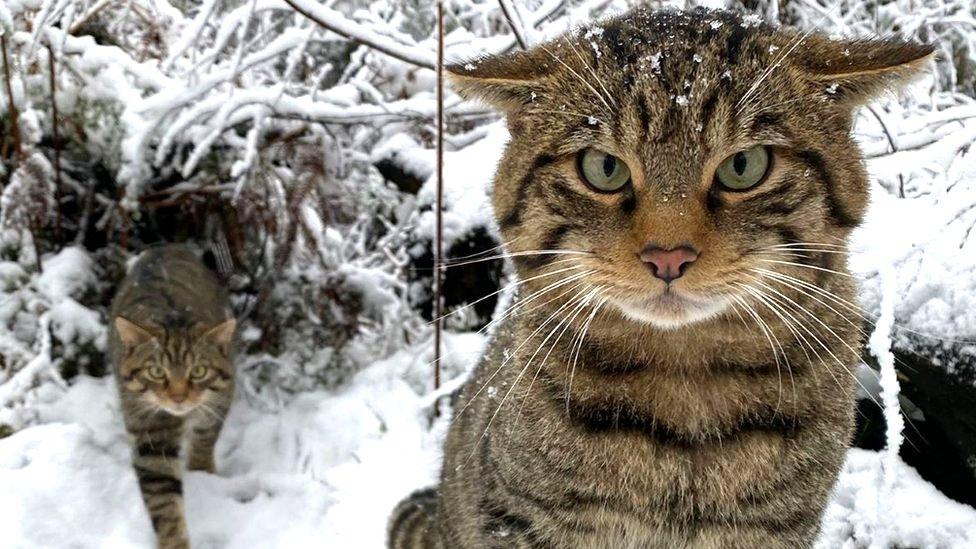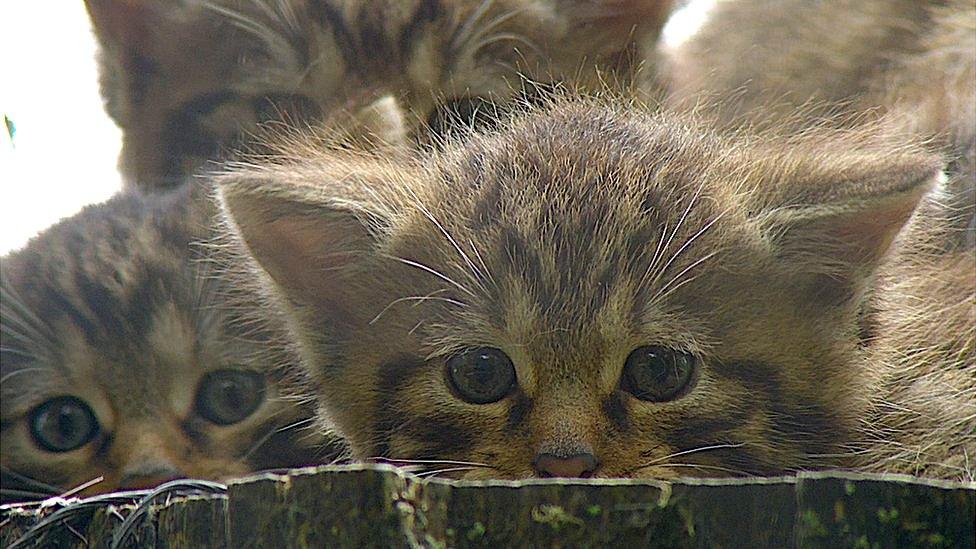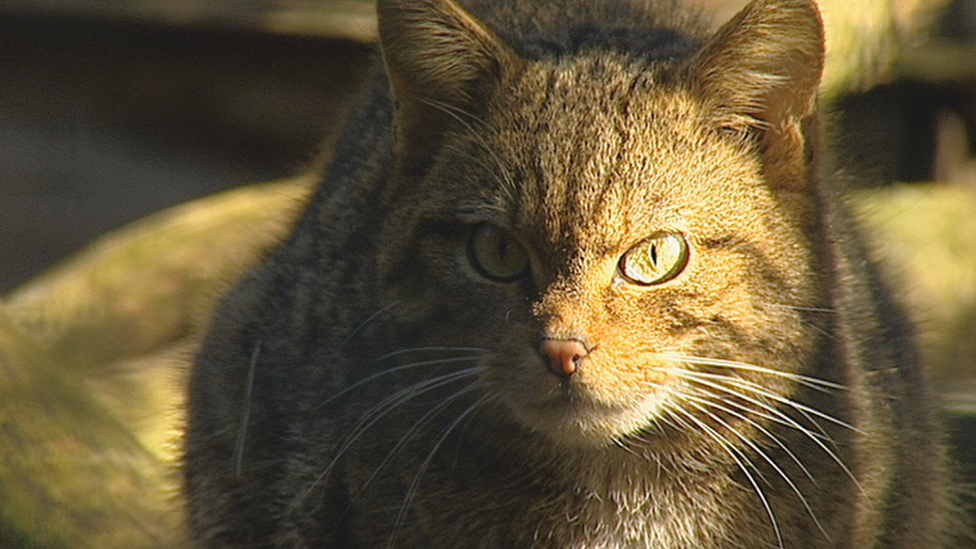Scotland's wildcat on brink of extinction - research
- Published
- comments

Captive breeding programmes have been recommended as one way to save the Scottish wildcat
The Scottish wildcat population is on the brink of extinction with most wild-living cats now hybrids, according to new research.
The five-year project led by NatureScot concluded there are too few wildcats in the country for the population to be viable.
It said hybridisation - wildcats breeding with feral or domestic cats - was a major threat to the species.
Disease and habitat loss were identified as other risks.
Biodiversity Minister Lorna Slater said the very existence of an iconic and much-loved species was under threat.
Previous research concluded the Scottish wildcat was "functionally extinct".
The latest research is the culmination of the Scottish Wildcat Action project - a collaborative effort led by Scotland's nature agency NatureScot, which ran from 2015 to 2020.
In a series of new reports, external, the project team has made recommendations on how to try and save the species.
They include releasing captive-bred wildcats in certain locations, alongside efforts to neuter hybrid and feral cats and improving habitats.
The project carried out surveys in priority areas - locations where conservation work could be targeted.
It also ran genetic tests on 529 cat samples, but none scored highly enough to be considered wildcats.
Almost 118 dead cats, more than half of them killed on roads, were also studied but none proved to be wildcats.
Researchers said they had found no recent evidence of wildcats from public sightings, camera-trap surveys or road-killed cats in the Highlands north of Lairg in Sutherland.
They also said there was scant evidence of any wildcats in Argyll and the Trossachs.
Plan to restore species
Funded by the National Lottery Heritage Fund, the project said it was likely wildcats, wildcat hybrids and domestic cats had mated freely with each other over many generations since the 1960s, creating a situation called a hybrid swarm.
Ms Slater said the Scottish government was committed to protecting and restoring Scotland's natural habitat.
She said: "Reversing the dramatic losses in nature that we have seen in recent times is one of the defining challenges that our country faces."
Dr Roo Campbell, NatureScot's mammal adviser said the five-year project was only at the beginning of a journey to restore Scotland's wildcat population.
He said: "The ultimate goal must be to establish a population of wildcats that does not need further human intervention to secure its survival.
"We're hopeful that we can achieve this by working together now to protect and restore this iconic species for generations to come."
Last month, a licence was approved for the release in the Cairngorms National Park of Scottish wildcats bred in captivity by the Royal Zoological Society of Scotland (RZSS).
RZSS head of conservation Dr Helen Senn said: "These reports show that wildcats are truly on the brink of extinction in Britain, and that a significant amount of work still needs to be done to secure a future for the Scottish wildcat population."
Related topics
- Published24 March 2023

- Published19 May 2022

- Published20 December 2018
